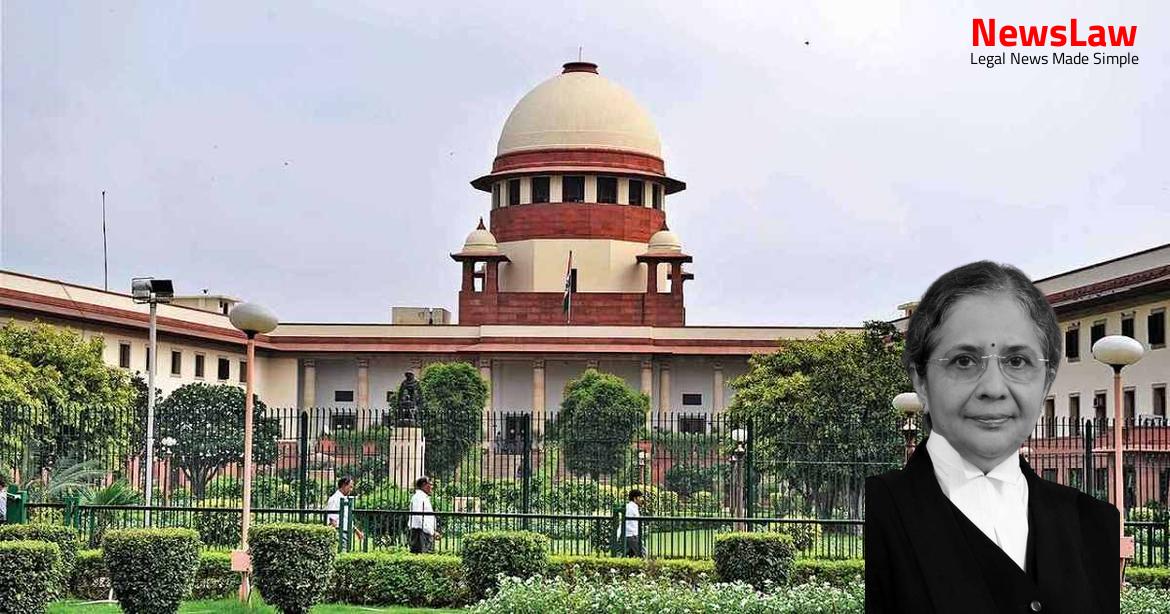Exploring the legal intricacies of defining ‘ghee’ as a ‘product of livestock’ under the Andhra Pradesh Agricultural Produce and Livestock Markets Act, this case summary delves into the court’s comprehensive legal analysis. The judgment upheld the 1994 notification regarding ‘ghee’ and underscored the importance of procedural compliance within the Act. Market committees were recognized as key actors in the enforcement of regulations within notified areas. Let’s unravel the fascinating legal nuances of this case.
Issue
- The first question is whether ‘ghee’ is a ‘product of livestock’ under the provisions of The Andhra Pradesh (Agricultural Produce and Livestock) Markets Act, 1966.
- The second question is whether the Government notification (G.O. Ms. No.286 dated 05.07.1994) which notifies ‘ghee’ as a product of livestock for the purpose of regulation of purchase and sale in all notified market areas was published after due compliance of the procedure under the provisions of the Act.
- The Act was enacted in the erstwhile State of Andhra Pradesh to regulate the purchase and sale of agricultural produce, livestock, and products of livestock, as well as to establish markets for the same.
- The primary objective was to ensure farmers received fair and remunerative prices by directly engaging producers and traders, eliminating middlemen, and addressing unethical trade practices.
Also Read: Analysis of Limitation Act in Special Laws
Analysis
- The Act empowers market committees to establish markets for the purchase and sale of specified agricultural produce, livestock, and products of livestock.
- Ghee is considered a product of livestock as it is derived from milk, which is a product of cow/buffalo.
- In 1968, Andhra Pradesh notified ‘ghee’ as a livestock product, affirming its status under the Act.
- The Act mandates a draft notification and objection hearings under Section 3 but not under Section 4.
- Market committees are duty-bound to enforce Act provisions within notified areas and provide facilities for the sale of notified products.
- The government can declare ‘notified market areas’ for specified products under Section 4.
- Challenges to the validity of notifications were dismissed as ‘ghee’ qualifies as a product of livestock under the Act.
- The court upheld the 1994 notification, concluding that procedural compliance is only necessary for certain instances under the Act.
- The notification process under Section 4 is distinct from that under Section 3, requiring different procedures for declaration.
- The judgment in Kommisetty Nammalwar reaffirms the validity of the 1994 notification and dismisses challenges from dairy producers.
- The market committee has the duty to enforce the provisions of the Act and rules made under it in the notified area.
- The market committee must establish markets as directed by the Government for the purchase and sale of vegetables or fruits and provide specified facilities.
- The Government must publish a draft notification to regulate the purchase and sale of agricultural produce, livestock, or products of livestock in a specified area.
- Livestock and products of livestock are defined under Section 2(v) and Section 2(xv) respectively.
- After considering objections and suggestions received, the Government may publish a final notification declaring a notified area for the Act’s purposes.
- The Government may exclude or include areas in a notified area, or declare a new notified area by separating or uniting areas.
- Market committees may be constituted for new notified areas with supplemental provisions regarding composition and assets/liabilities.
- A separate market committee may be constituted for a special market in a notified area.
- The High Court observed that ‘ghee’, although not directly obtained from milk, is considered a ‘product of a product of livestock’.
- The Supreme Court ruled in a case related to U.P. Krishi Utpadan Mandi Adhiniyam, 1964, that ‘ghee’ can be classified as a livestock product even though it is derived from another dairy product.
- The Court also discussed the inclusion of ‘tanned leather’ under the category of ‘hides and skins’ as per the Act, stating that the process of tanning leather does not change its fundamental nature as leather.
- The Full Bench of Andhra Pradesh High Court also supported this interpretation.
- The judgment emphasized that all animal husbandry products are considered ‘products of livestock’ under the Act.
- Appellants utilized the facility provided by the Market Committee and are therefore liable to pay the market fee.
- The collection of market fees by the Respondent Market Committees should not be restrained prior to the date of the High Court Judgment.
- The market fee should be paid by the appellants.
- There may be a question of unjust enrichment in this case.
Also Read: Legal Analysis of Slum Rehabilitation Scheme and Private Arrangements
Decision
- The appeals are dismissed, and the majority decision of the Andhra Pradesh High Court is upheld.
- Interim orders restraining the collection of market fees prior to the High Court judgment are vacated.
- Accumulated fees for more than 14 years must be deposited with the Committee in four equal instalments within two years from the decision date.
Also Read: Scope of Judicial Scrutiny in Referral to Arbitration
Case Title: SANGAM MILK PRODUCER COMPANY LTD. Vs. THE AGRICULTURAL MARKET COMMITTEE (2024 INSC 174)
Case Number: C.A. No.-006493-006493 / 2014



